Short Talk: I have tons and tons of movies + TV series that I haven't touched since I came to Australia... I wonder how I spend all my free time...
First of all, the Warman Project is part of my design subject and we were given the task of designing 2 devices, to carry a baton from one end of the track to the other.
However, at least one of the devices must be fully mechanical. i.e. not using electric motors and batteries. So the first thing that comes to mind is like a rubberband or spring to store energy.
My group, comprising of (Low) Jia Wei, Kok Wee, Eugene and I, bought a small toy car with a pullback mechanism with a string attached, so we pull the string instead of pulling the car back to store energy.
As for the 2nd device, we bought this:

But since it couldn't be used as our second device directly, we took it apart and rebuilt it using the caterpillar tracks.
Overall, these are our two devices:

The 2 pipes act as the baton cradle.
Top view:
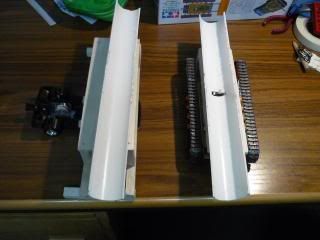
See that little hole on the second device (right) ?
It is actually a switch (normally-open) that starts the motor when the baton falls on it.
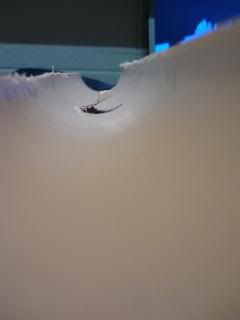
Side view:
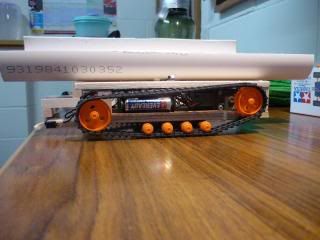
See the little black thing sticking out on the left?
It's actually the switch (normally-closed) to stop the motor once it hits the barrier at the end zone.
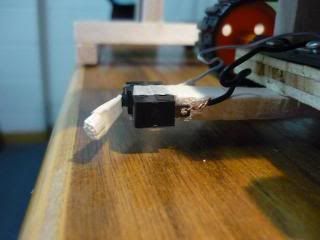
This is our first device which is fully mechanical:
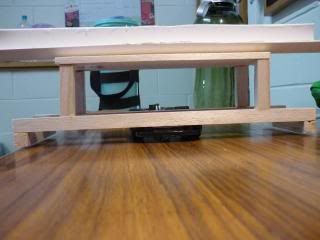
Like I said, we bought a toy car and added the wooden frame to mount the baton cradle (pipe).
This is the simple yet effective pullback mechanism:
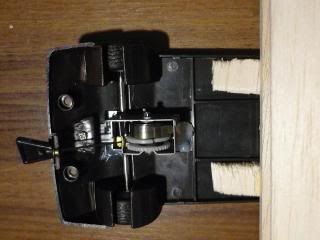
Because the front wheels kept falling off, I super-glued it and consequently it was stuck!! It wouldn't move at all because I applied too much glue and the axel was glued to the car!
Luckily for me I managed to get it rolling again without destroying the car or else my group mates would kill me!
As for the track, it looks like this:

We used our first device to carry the baton across the shorter section and stops when it hits the second device. As it hits, the impact causes the baton to fall on the baton cradle of the second device.
Thus, it starts the motors of the second device. The second device then races to the end zone and when it finally reaches, the switch at the front will hit the barrier causing the motors to stop.
Sounds simple?
We had several problems though:
1) The second device, using caterpillar tracks, will only move straight if the weight is even on both sides.
Which means we need to put the actual baton on the device and adjust the counterweights. But when we got there, it was stolen!! T_T
So we were forced to use the fake baton, although same in size, but 3 times the weight of a real baton for testing.
2) On competition day itself, our second device did not start although the baton fell on the switch. Which meant it the wires were not connected properly and thus wasted our first run.
After tightening the connections, I used blue tack to keep it in place, which I reckon was better than masking tape.
Each team were only allowed 2 runs and the next run was our last and only hope.
Anxiously waiting for our turn...
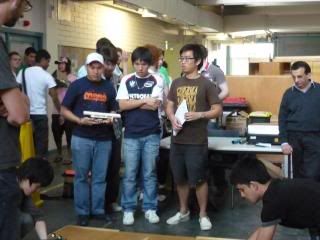
My heart was pounding while watching the team before us in fear that our device would fail again...
Finally its our turn!!

Eugene setting the first device and me setting the second device.
This was how it went:
It was an overall
Although our device almost flew off the tracks, we did not suffer any penalties!
(hopefully)
Here are our simple but proud devices!!
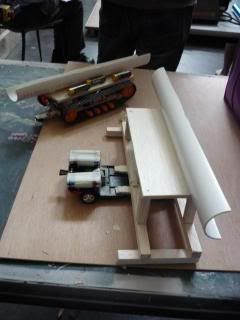
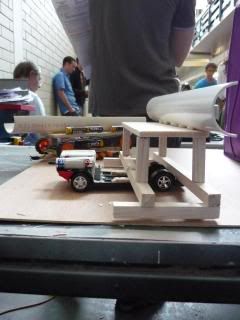
Finally, after 5 weeks of intensive labour, I get a break...
It won't be long before the next assignment, but I guess it's enough for me to rest... =)
Enjoy!! =D













